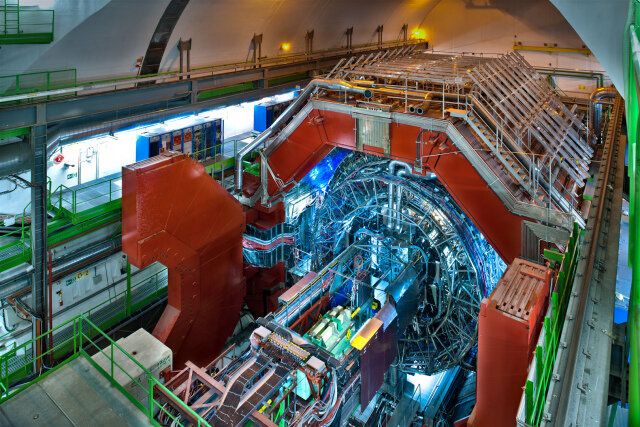A few millionths of a second after the Big Bang, the universe was so dense and hot that the quarks and gluons that make up protons, neutrons and other hadrons existed freely in what is known as the quark–gluon plasma. The ALICE experiment at the Large Hadron Collider (LHC) can recreate this plasma in high-energy collisions of beams of heavy ions of lead. However, ALICE, as well as any other collision experiments that can recreate the plasma, cannot observe this state of matter directly. The presence and properties of the plasma can only be deduced from the signatures it leaves on the particles that are produced in the collisions.
In a new article, presented at the ongoing European Physical Society conference on High-Energy Physics, the ALICE collaboration reports the first measurement of one such signature—the elliptic flow—for upsilon particles produced in lead–lead LHC collisions.
The upsilon is a bottomonium particle, consisting of a bottom (often also called beauty) quark and its antiquark. Bottomonia and their charm-quark counterparts, charmonium particles, are excellent probes of the quark–gluon plasma. They are created in the initial stages of a heavy-ion collision and therefore experience the entire evolution of the plasma, from the moment it is produced to the moment it cools down and gives way to a state in which hadrons can form.
